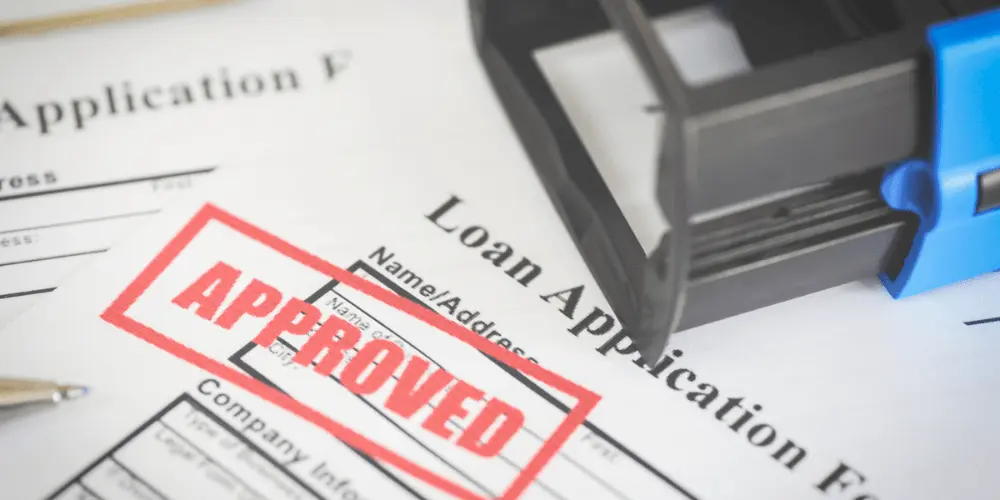
Some loans can help you reach your financial goals, but others only create more problems. These loans often have high interest rates, unreasonable fees, or repayment terms that trap borrowers in cycles of debt. Understanding the risks of these loans can help you make better borrowing decisions and protect your credit score and financial future.
In this guide, we’ll break down six of the worst types of loans to avoid. We’ll explain why they’re risky, how they work, and what safer alternatives are available if you’re in a financial bind.
Any loan that creates long-term problems instead of helping you manage short-term financial needs is a bad one. These loans usually come with:
Even if a loan seems like a fast way to get cash, the long-term cost may be more than you can afford. That’s especially true if you already have debt, poor credit, or limited income.
Let’s take a closer look at six loan types that borrowers should approach with caution, or avoid entirely.
Payday loans are short-term, high-cost loans usually meant to be repaid by your next payday. They often promise fast approval with no credit check, making them appealing to people facing urgent expenses. However, these loans come with sky-high interest rates and fees.
Many payday lenders charge APRs that exceed 400%, and the repayment window is often only two weeks. If you can’t pay the loan off in time, you may have to roll it over, leading to more fees and a debt cycle that’s hard to break.
According to the Consumer Federation of America, payday loans often leave borrowers worse off than before, especially when multiple loans are taken back to back.
To learn how to handle emergencies without taking on payday debt, visit Credit.org’s guide on good debt vs. bad debt.
Car title loans are another form of short-term lending, where you use your vehicle title as collateral. If you don’t repay the loan on time, the lender can repossess your car. These loans are risky, especially if you rely on your vehicle to get to work, care for your family, or handle daily tasks.
Most car title loans come with high interest rates, short repayment terms, and a risk of losing your car over a relatively small loan. In some cases, the fees and interest charges can exceed the original loan amount.
Even if you have poor credit, there are safer ways to get help. Explore options like a debt consolidation plan that can combine multiple debts into one monthly payment with a lower rate.
A cash advance lets you withdraw money from your credit card account, but it’s one of the most expensive ways to borrow. Unlike regular purchases, cash advances often carry higher interest and start accruing interest immediately. There’s no grace period, and you may also pay a cash advance fee of 3% to 5% of the total amount.
Let’s say you use your credit card to take out a $500 cash advance. If your card charges a 24% APR and a 5% fee, you could pay more than $600 to repay the loan, especially if you can’t pay it off quickly.
Managing your credit card wisely is an important part of maintaining a healthy credit profile. Learn more in our article on credit card payments and avoiding late fees.

Borrowing from family may seem like a safe, low-pressure option, but it can lead to damaged relationships if expectations aren’t clearly defined. A family loan can turn personal connections into financial obligations, and misunderstandings about repayment can cause long-term tension.
If you do borrow from family, treat it like a real loan. Create a written agreement that outlines repayment terms, interest charged (if any), and consequences for late or missed payments. This keeps things transparent and prevents resentment later on.
Credit.org offers budgeting help and educational tools to help families handle financial trouble without putting loved ones in a tough spot.
Installment loans are often marketed as more manageable than payday loans because they allow repayment over time. But many come with high interest and hidden fees that make them just as risky. These loans target people with poor credit who may not qualify for bank loans or low-interest credit cards.
For example, an installment loan of $2,000 with a 36-month term and a 99% APR could leave you repaying over $6,000 by the time the loan is done. Even if the monthly payments seem affordable, the total cost is massive.
Look for safer options, like working with nonprofit credit counselors who can help you build a repayment plan without racking up interest.
Lenders who promise “no credit check” or “guaranteed approval” often market to people with poor credit. While these loans may sound appealing, they often carry high risk. Without checking your credit report, lenders may not care if you can afford to repay the loan, because they’re making their money through sky-high fees and interest.
Instead of jumping into these offers, take the time to build good credit or explore a secured loan backed by savings or collateral. These options can be safer and more affordable in the long run.
The APR is one of the most important numbers to understand when taking out a loan. It reflects the total cost of borrowing—including the interest and any fees—on an annual basis. A lower APR means you’ll pay less over time.
Unfortunately, some loans often hide their true costs by emphasizing “low monthly payments” while masking a high APR. Always compare APRs before choosing a loan, and don’t be fooled by offers that downplay total interest.
Learn more about APR and interest rates in this Khan Academy video.
Your credit score plays a major role in the loan offers you receive. Borrowers with good credit usually qualify for lower rates, higher loan amounts, and better terms. On the other hand, a low credit score often limits your choices and drives up borrowing costs.
If your credit score needs improvement, focus on paying down high-interest debt, making on-time payments, and keeping credit card balances low. Over time, these steps can raise your credit score and open the door to better options.
Review your credit report at least once a year through AnnualCreditReport.com to check for errors or signs of identity theft.
There’s a difference between having bad credit and taking on bad debt. Bad credit means your borrowing history includes late payments, defaults, or high credit utilization. Bad debt refers to loans that offer no long-term value and cost more than they’re worth, like payday or title loans.
Understanding this difference is key. You may be able to improve poor credit over time, but debt can keep you stuck in a financial cycle. Learn the distinction in our guide to good debt vs. bad debt.
If you’re juggling multiple high-interest debts, combining them into one monthly payment can make repayment easier. But instead of taking out a new loan, which may come with high costs or risky terms, we recommend working with a nonprofit agency to set up a debt management program.
This kind of program allows you to consolidate your payments—not your debt—into a single monthly plan, often with reduced interest and waived fees. You won’t be borrowing more money; you’ll be organizing the debt you already have into a manageable plan.
Visit Credit.org’s debt management program page to learn how we can help you simplify payments and regain control without taking on new debt.
Not all lenders are created equal. Many loans come from lenders who rely on vague loan agreements, unclear terms, and aggressive marketing tactics. Watch for these red flags:
If a loan offer feels too good to be true, it probably is. Always research the lender, read the fine print, and avoid signing anything you don’t fully understand.
Before accepting a loan, take the time to understand every aspect of the loan agreement. Key things to look for include:
Also check for language around collateral. Some lenders may require you to provide collateral, such as your car or savings, which puts your assets at risk.
One of the best ways to avoid bad borrowing is to build better financial habits. Create a written budget, track your monthly payments, and set realistic short-term and long-term goals. Having a clear plan can help you avoid borrowing out of panic or desperation.
Some people use tools like budgeting apps or journals to stick to their goals, while others rely on free financial education guides from trusted nonprofit sources. Whatever method you choose, the key is staying informed and planning ahead.
Unlike large banks or payday lenders, credit unions are nonprofit financial institutions owned by their members. They often offer personal loans with lower interest and more flexible repayment terms. If you’re facing a financial crunch, a credit union might be a better option than turning to high-cost lenders.
You may also find small loans, credit-builder loans, or secured credit cards that can help you improve your credit score over time.
Even a “low cost” loan can end up being expensive if the rate or repayment term is too high. Let’s say you borrow $3,000 at an APR of 25% for 36 months. You could end up paying over $4,800 in total.
Understanding how interest payments add up is critical. Use a loan calculator to estimate how much you’ll really repay and compare your options carefully.
Borrowing against your car or home may offer lower interest rates, but it also puts your property at risk. If you fall behind, you could lose your vehicle or face foreclosure.
Auto loans and home equity lines of credit (HELOCs) should only be used when you have stable income and a strong repayment plan. Never borrow more money than you can afford to repay, even if the lender is willing to approve it.
Financial emergencies happen. But not every loan is the solution. Many loans target people in difficult situations, offering quick cash while hiding the real costs. Learning how to spot high-risk loans, avoid aggressive lenders, and improve your credit profile will help you make safer financial choices.
Avoid loans that:
Instead, take steps to build a safety net. Whether it’s through budgeting, credit counseling, or saving a small amount each month, you can build financial strength over time.
Knowing how to talk about borrowing helps you recognize warning signs and make informed decisions. Throughout this guide, we’ve explained important loan terms like annual percentage rate, lump sum, short term loans, repayment terms, and interest rate. These phrases may seem technical, but they affect the real cost of borrowing.
When lenders offer cash fast or promise guaranteed approval, it’s important to pause and ask questions. Many lenders use these terms to attract borrowers with poor credit or a low credit score, hoping you won’t notice the true cost. Others may promote auto title loans or cash advance products that come with more interest and fewer protections.
If a new loan sounds too good to be true, check whether it will help you produce income or just add more debt. Understanding these key terms will help you avoid high cost traps and choose safer options.
If you’re dealing with high-interest debt or facing tough financial decisions, Credit.org can help. Our nonprofit counselors are ready to walk you through your options, from credit counseling to debt relief and housing support.
Take control of your financial future with free, confidential support. Visit Credit.org today to speak with a certified counselor and build a plan that works for you.